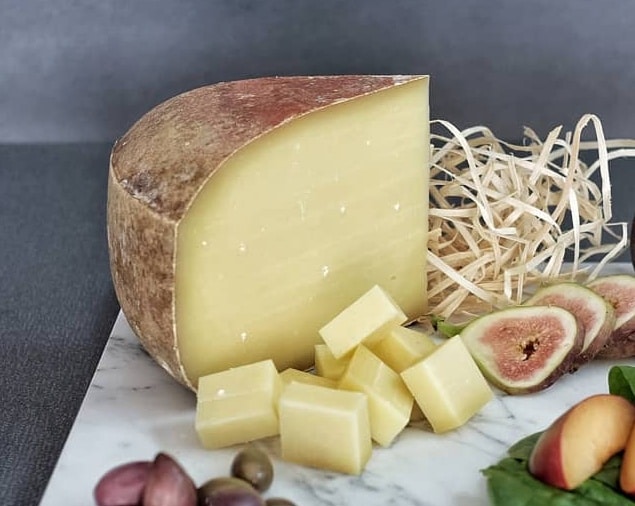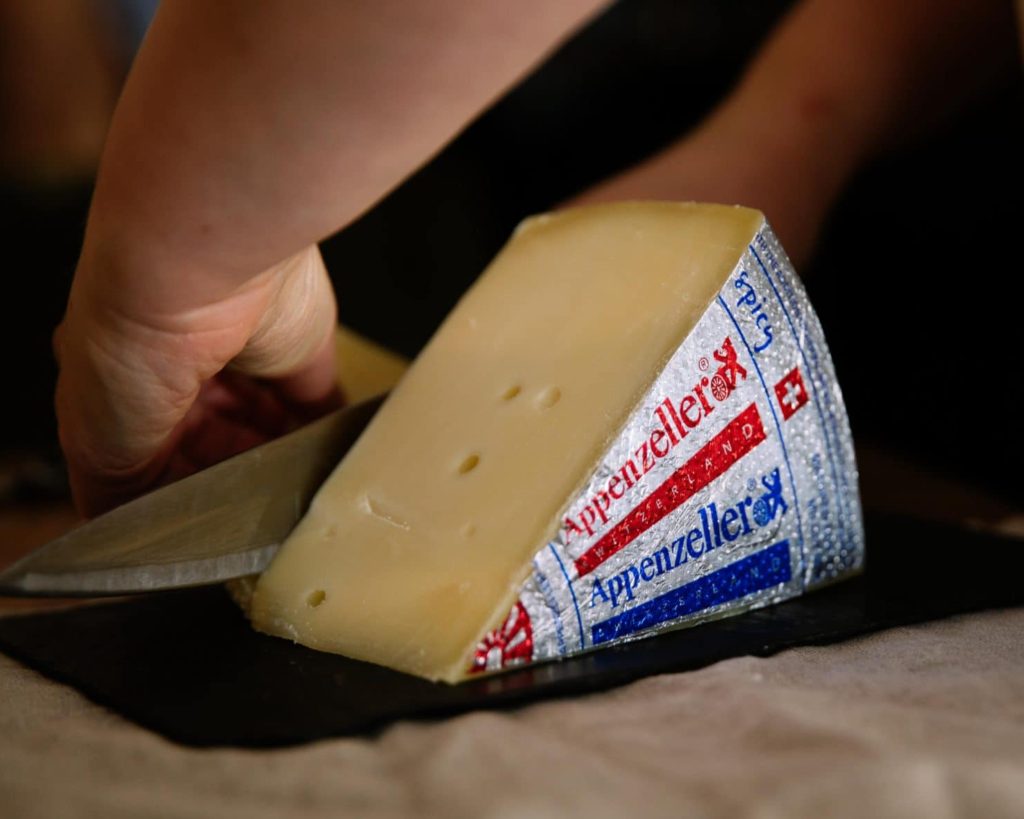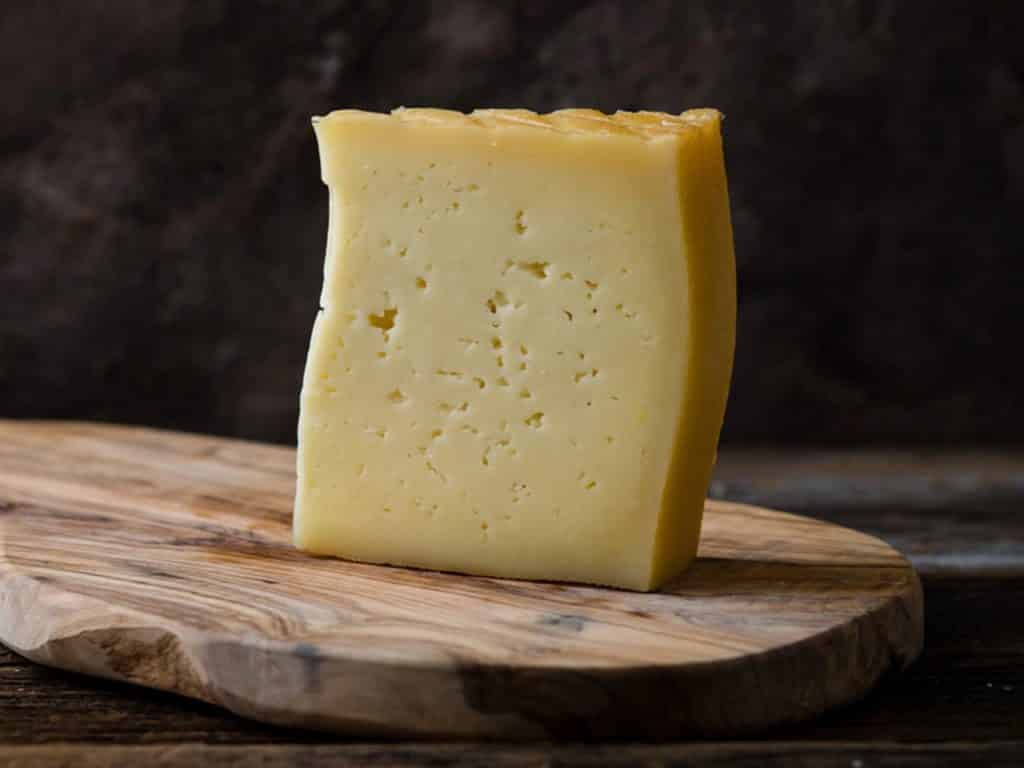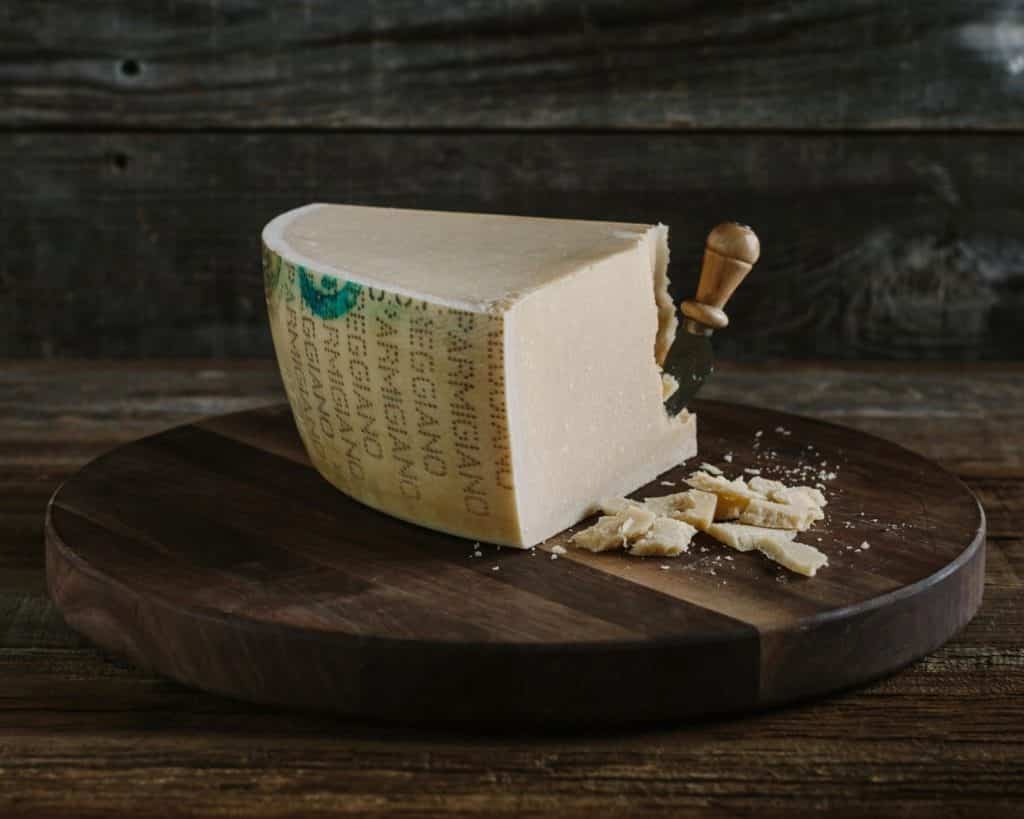Cheese enthusiasts and connoisseurs around the world are constantly on the lookout for unique and exceptional cheeses to savour. One such hidden gem in the world of artisanal cheeses is Stichelton. In this blog post, we will delve into the history, production methods and organoleptic properties of Stichelton cheese.
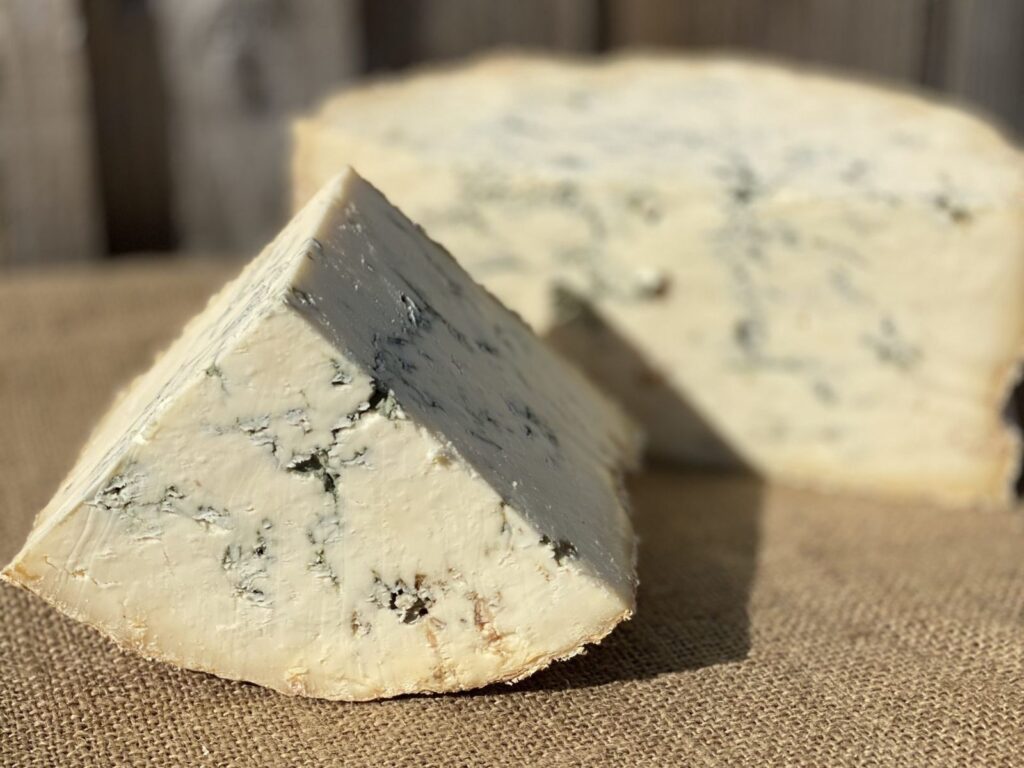
What type of cheese is Stichelton?
Stichelton cheese is a type of blue cheese. It bears a few similarities with Stilton cheese because it shares many traits in terms of flavour, texture and appearance.
However, there is a key distinction: Stichelton is made using raw, unpasteurised cow’s milk. On the other hand, traditional Stilton PDO makers exclusively use pasteurised milk.
Origins of Stichelton
Stichelton cheese has its roots deeply embedded in the English countryside. Actually, its history harkens back to a time when raw milk was used to create the original Stilton cheese.
However, in the late-20th century, regulations mandated the use of pasteurised milk in the production of Stilton. This was the inspiration which led to the emergence of Stichelton as a revival of the traditional method.
Located in Nottinghamshire, England, the Welbeck Estate Creamery is the home of Stichelton. This picturesque region has lush pastures and a pristine countryside. Those provide the perfect environment for sourcing the raw cow’s milk essential for crafting this exceptional cheese.
Moreover, the name “Stichelton” derives from an ancient reference to Stilton village found in the 1086 Domesday Book, where it was recorded as “Stichiltone” or “Sticiltone.”
This choice of name is a result of legal restrictions that prevent the use of the term “Stilton” for the cheese. And this is despite its historical association with the village.
The Producer: Joe Schneider
At the heart of the Stichelton cheese revival is the passionate and dedicated cheesemaker, Joe Schneider. With his commitment to preserving artisanal cheesemaking techniques, Schneider played a pivotal role in reviving the use of raw milk in Stilton-style cheese.
His meticulous attention to detail and unwavering dedication to quality are evident in every wheel of Stichelton cheese produced at Welbeck Estate Creamery.
How it is made
Stichelton cheese is a testament to tradition and craftsmanship. It begins with the collection of raw cow’s milk, sourced from local dairy farms that adhere to stringent quality standards. This raw milk imparts a unique character to the cheese, with its complex flavours and natural richness.
The cheesemaking process involves careful monitoring of temperature, pH levels and curd development. After the initial curd formation, the makers pierce Stichelton cheese truckles with stainless steel rods, allowing air to enter and encourage the growth of blue veins.
The cheese wheels are then aged for a minimum of two months, during which time they develop their distinctive creamy, crumbly texture and robust, nutty flavours.
Organoleptic properties
Undoubtedly, Stichelton cheese is a sensory delight. Its appearance showcases a creamy, ivory interior adorned with beautiful blue veins.
When it comes to flavour, expect a symphony of sensations: a rich, buttery foundation with nutty undertones, a subtle tanginess, and the perfect touch of earthiness from the blue veining.
Finally, its texture is simultaneously creamy and crumbly, creating a harmonious mouthfeel that lingers on the palate.
Serving guide
To fully appreciate this raw milk blue, consider the following serving suggestions:
Pairing: Stichelton pairs wonderfully with crusty bread, crackers, or fresh baguettes. Complement its flavours with sliced pears, figs or a drizzle of honey for a sweet contrast.
Wine: Opt for a full-bodied red wine, such as a Bordeaux or a Malbec, to enhance the cheese’s depth of flavour. Or choose a fortified wine like Port.
Salads and Other Dishes: Crumble Stichelton into salads, melt it into sauces, or use it as a topping for burgers and baked potatoes to elevate your culinary creations.
Three alternatives to Stichelton
If you’re intrigued by Stichelton and want to explore similar blue cheeses, consider these alternatives:
1. Roquefort: Hailing from France, Roquefort boasts a creamy texture and a pungent, tangy flavour profile. It is aged in natural limestone caves, imparting a distinct terroir to the cheese.
2. Gorgonzola: Italy’s most famous contribution to the world of blue cheese, Gorgonzola offers a creamy, crumbly texture with a milder and slightly sweeter taste compared to Stichelton.
3. Cashel Blue: This Irish blue cheese is known for its creamy, dense texture and balanced, mild blue flavour. It’s an excellent choice for those looking to ease into the world of blue cheeses.
Conclusion
In the realm of artisanal cheeses, Stichelton stands as a testament to tradition, dedication, and terroir. With its rich history, meticulous craftsmanship by Joe Schneider, and tantalising organoleptic properties, it’s a cheese that promises a memorable culinary experience.
Whether you enjoy it on a cheese platter, in a gourmet dish, or paired with your favourite wine, Stichelton is sure to leave an indelible mark on your palate. So, embark on this flavourful journey, and let Stichelton cheese transport you to the heart of English cheesemaking heritage.
